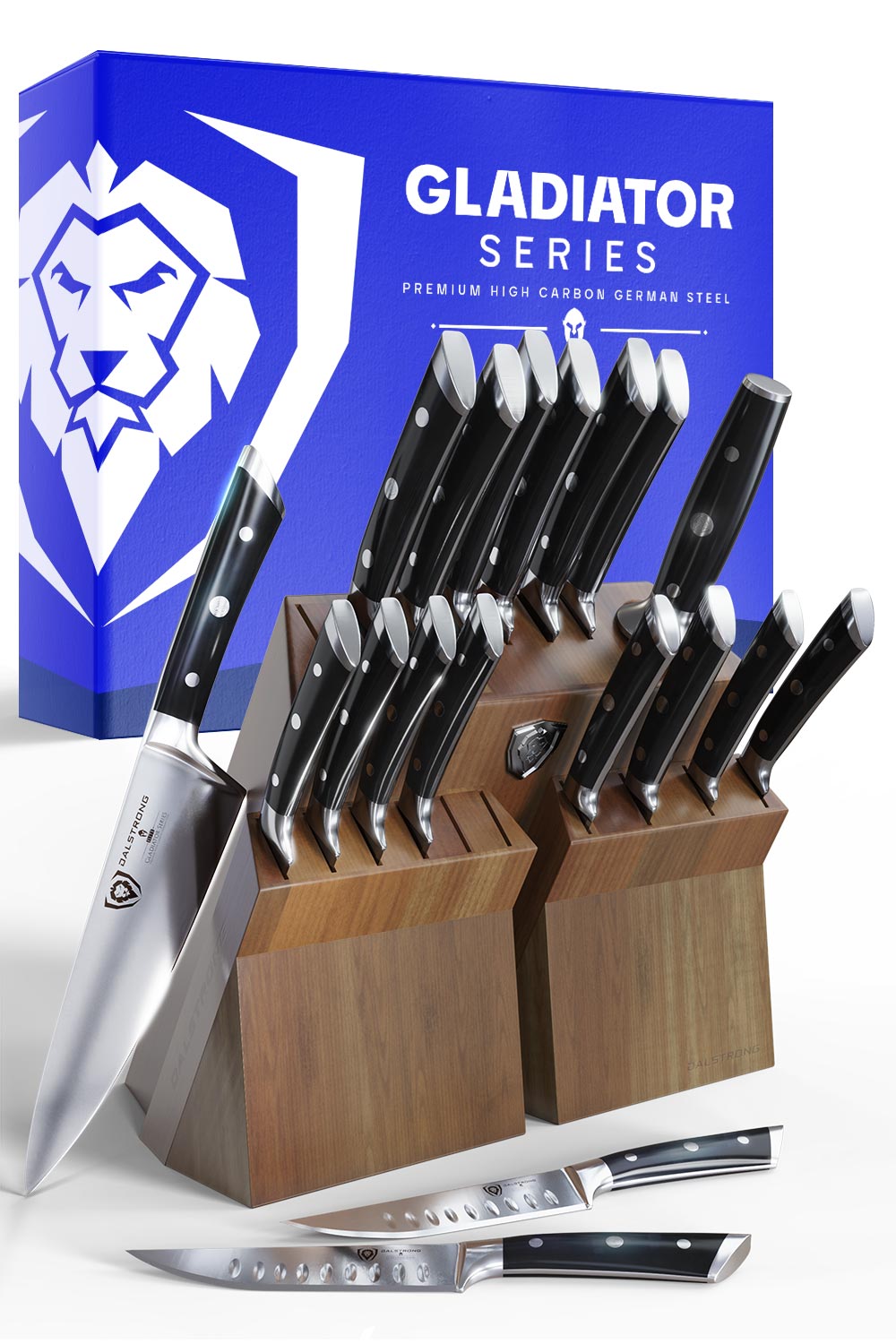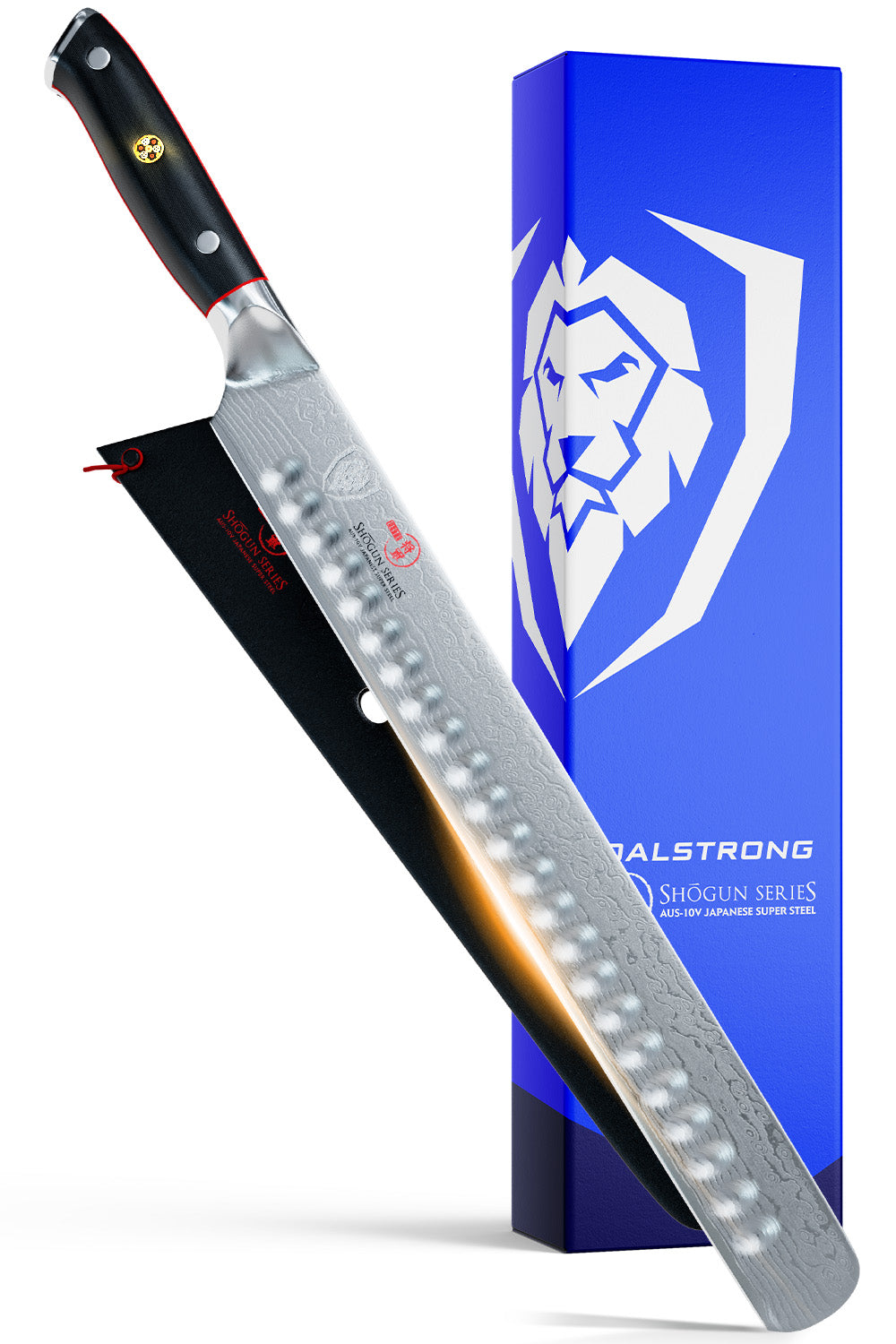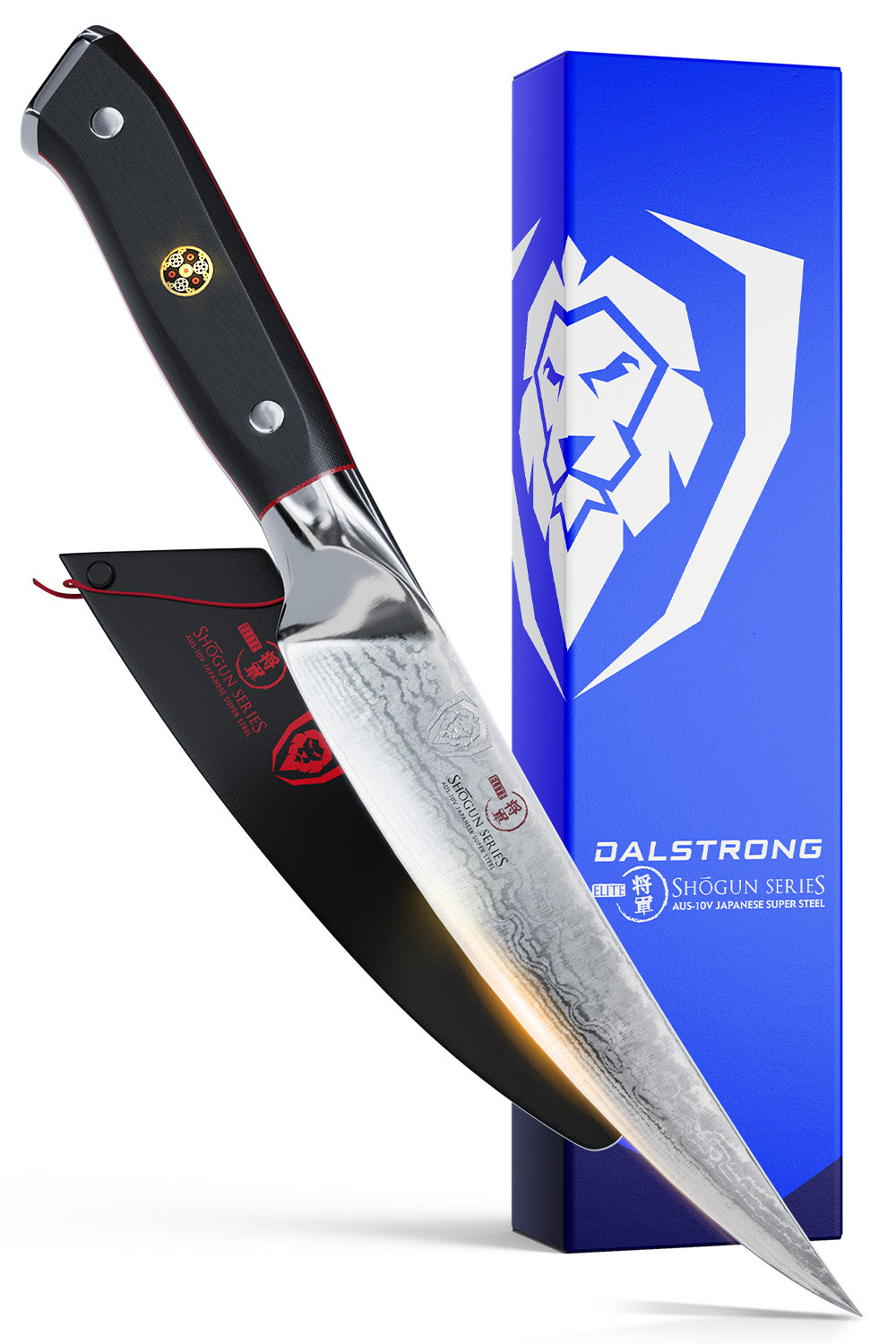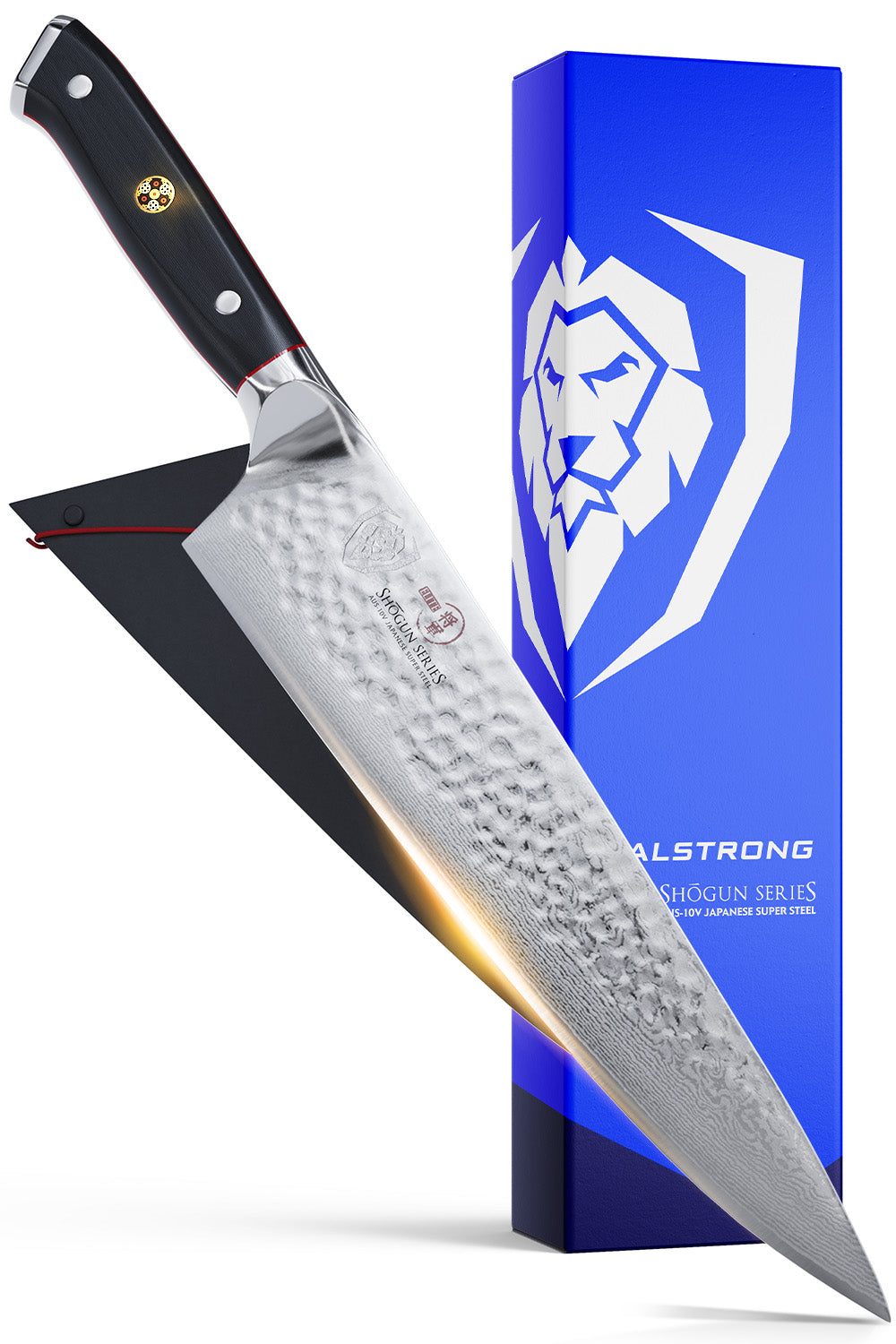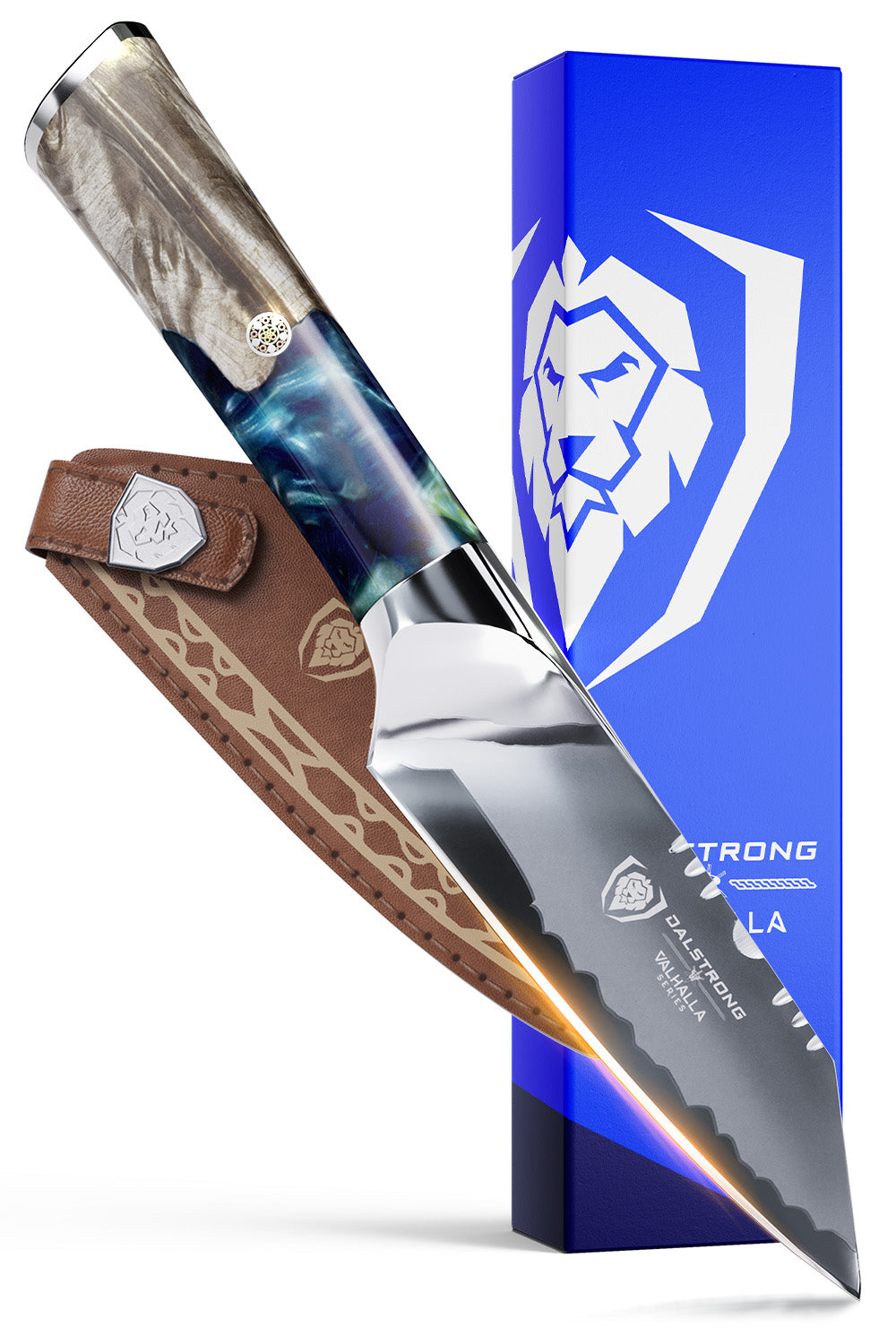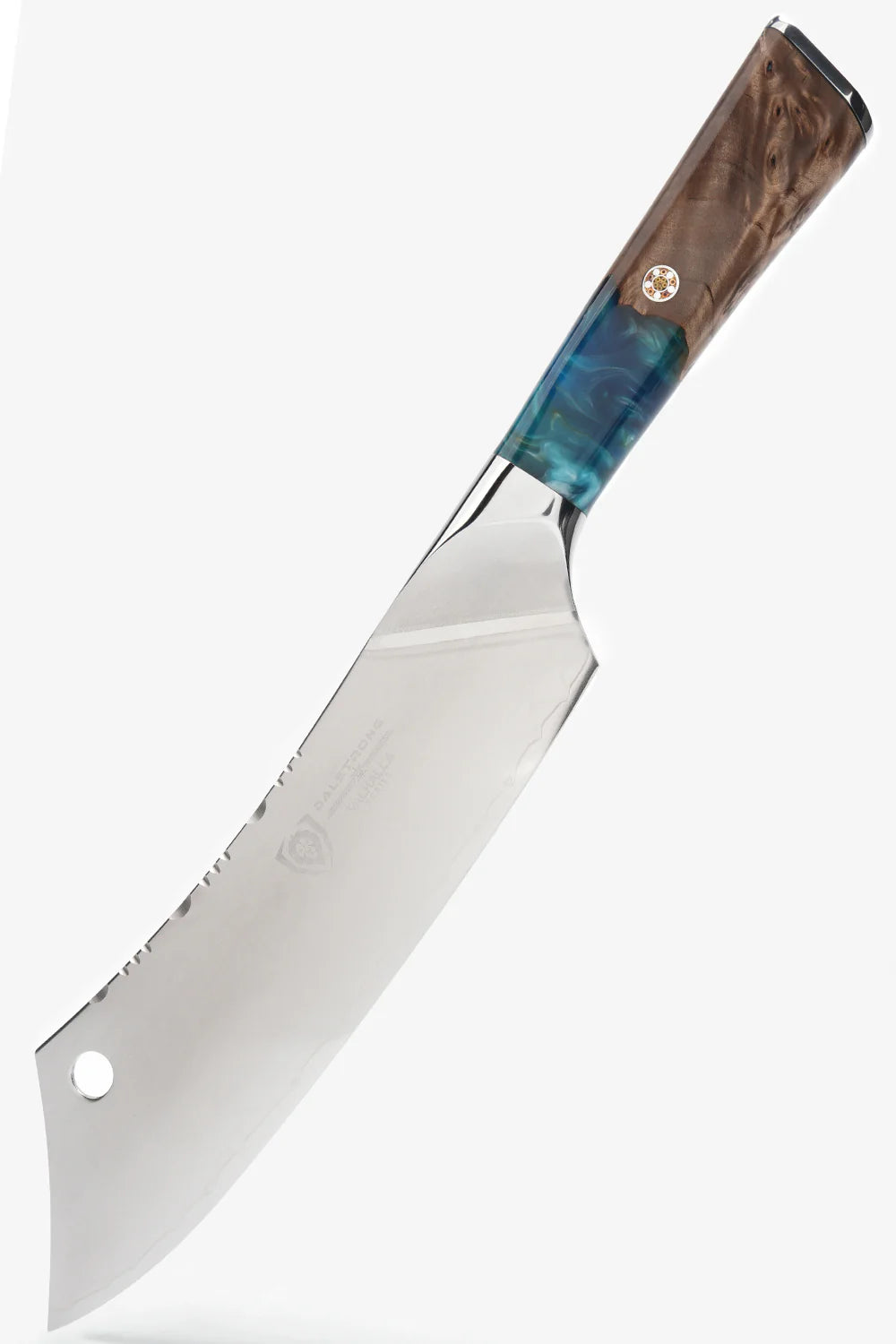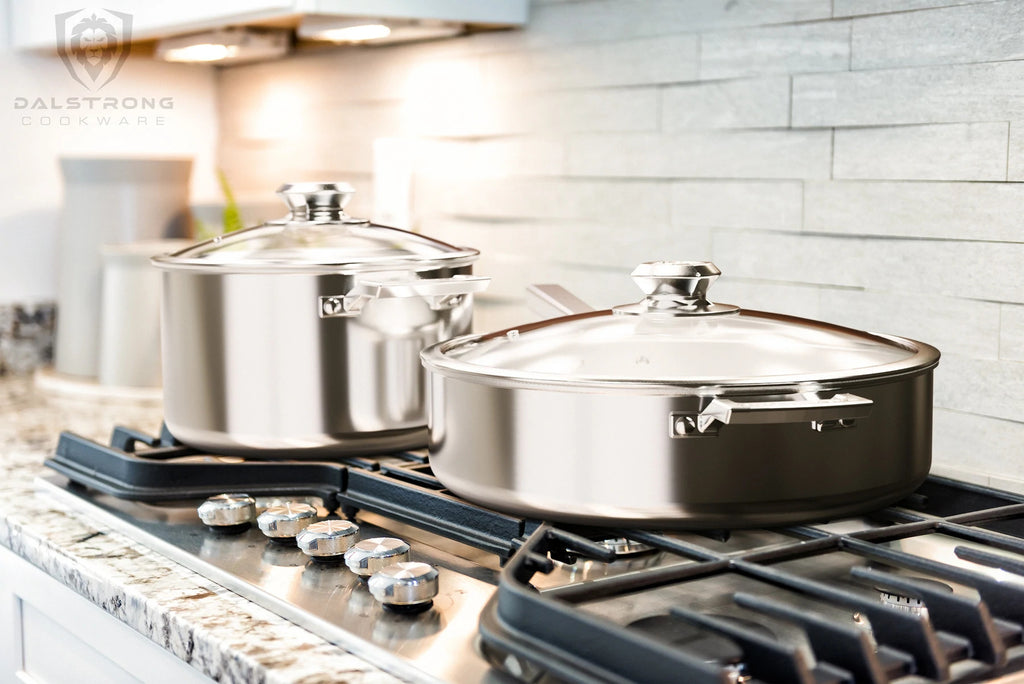 Dalstrong Oberon Series 6 Piece Cookware Set
Dalstrong Oberon Series 6 Piece Cookware Set
Stainless steel cookware is designed to withstand most abrasions, and high temperatures – Everything you could wish for in a cookware set! Unlike carbon steel, stainless steel is carefully engineered to resist rust and corrosion, which ultimately increases its durability ten folds.
Professional chefs often describe carbon steel pans as a hybrid of cast iron and stainless steel, but it still doesn’t offer the same perks. Stainless steel is designed to protect itself against oxidization, whereas carbon steel corrodes and rusts quickly when exposed to moisture.
While cast iron skillets and carbon steel pans often get confused for the same, we’re here to highlight the differences between the two of them, and why stainless steel cookware is a better purchase. Let’s get started!
 Dalstrong Oberon Series 10" Frying Pan & Skillet | ETERNA Non-Stick
Dalstrong Oberon Series 10" Frying Pan & Skillet | ETERNA Non-Stick
1. What Is A Carbon Steel Pan?
Carbon steel pans are known for their excellent heat conductivity, as well as heat retention. They’ve made their place in the kitchen arsenal of every household for these reasons, precisely. Versatile and durable, carbon steel pans help cook foods like steaks and cornbread at an incredible speed while preserving their nutritional value.
Carbon steel pans are very similar to cast iron pans. Carbon steel pans are made with iron. The 99 iron percentage helps keep its matte appearance. The 1 carbon percentage helps in making the metal smoother and reduces its brittle appearance.
That is also a key difference between a carbon steel pan and a nonstick pan. Carbon steel pans are also much thinner than cast iron skillets and so heat quicker too, just like stainless steel cookware.
Though some would argue that they look similar, carbon steel cookware such as a pan set is significantly more expensive than a cast iron pan for the same reason.
Texture and Appearance
While it is thinner in appearance, it is still stronger than cast iron cookware such as the infamous cast iron pans.
Carbon steel is an alloy of iron and carbon. At one point in time, it was considered steel. However, on the other hand, stainless steel cookware contains carbon and chromium for a corrosion-resistant build.
Cast iron cookware, and cast iron pans in particular, have a rugged texture and appearance, whereas carbon steel pans have a more mattifying look.
However, stainless steel pans, in comparison to both, are shinier. Carbon steel is ten folds harder than stainless steel pans, but it isn’t corrosion and rust-resistant.
2. Pros and Cons of Carbon Steel Pans
There are plentiful reasons why a carbon steel frying pan belongs in your kitchen arsenal just like it does in professional kitchens. However, there are more disadvantages to this piece of cookware than there are perks.
This is due to a variety of reasons. Have you ever wondered why most expensive pans, such as a Matfer Bourgeat pan, aren’t reacting well to acidic ingredients?
Well, that is because the cooking surface of carbon steel pans is resistant to acidic foods and hot liquids, which is why they need to be constantly re-seasoned. This can be a massive inconvenience, considering they aren’t dishwasher friendly either.
We’ve talked about these attributes in detail, in the table below.
|
Pros |
Cons |
|
|
|
|
|
|
|
|
|
3. Key Differences Between Cast Iron Skillet and Carbon Steel Skillet
Confused between a cast iron and carbon steel skillet? Regardless of what you pick, they will make cooking look like a walk in the park. However, choosing the right piece of cookware is crucial.
We’ve listed down all the attributes that you should take into consideration to make the right purchase. Just like stainless steel cookware, cast iron skillets are much more durable and affordable than carbon steel skillets.
A couple of other reasons why most people prefer cast iron skillets over carbon steel skillets is because they are built to last a lifetime. Cast iron skillets are far more easier to maintain, and often last up to 5-7 decades with the right care.
Whereas carbon steel skillets can leach high amounts of iron into your food, which can make them quite toxic. They need not last as much as 5-7 decades like cast iron skillets do, but carbon steel cookware often falter in 2-3 years.
This is because they require high maintenance, and that can often be difficult to provide if you have a busy lifestyle. Not being dishwasher safe is yet another downfall, as you would have to hand-wash them.
|
Attribute |
Cast Iron |
Carbon Steel |
|
Affordability |
|
|
|
Appearance |
|
|
|
Indestructibility |
|
|
|
Maintenance |
|
|
|
Seasoning |
|
|
4. How and Why Do I Need To Re-Season My Cast Iron Skillet or Carbon Steel Skillet?
If you’ve been using your cast iron and carbon steel skillet for a couple of years, chances are, you need to re-season the pan quite a lot of times because food is beginning to stick to the cooking surface.
The best part about owning either of these two skillets is that they can be re-seasoned using the same techniques. Here’s what you need to do with both pans to re-season it.
Steps:
- Simply preheat your oven to 400º F and line the bottom of your pan with some tin foil.
- In a medium bowl, make a soap and water mixture.
- Dip your paper towel in the mixture and apply it to the surface of your pan.
- For cast iron skillets, it is best to apply the soap and water mixture with a basting brush.
- Leave for 10 minutes, and then rinse it out.
- After rinsing, remember to pat them dry, as the soap and water mixture can damage the cooking surface of your skillet significantly.
- Pre-heat your oven, and place the dried-up skillets in it.
- Bake your skillets for an hour at the very least.
- Once the timer goes off, turn off your oven, but don’t take the skillets out.
- Let your skillets cool down overnight in the oven itself, as this helps retain moisture without damaging the skillet.
- The next morning, take it out, and get on with your cooking!
5. Key Differences Between Carbon Steel Pans vs. Stainless Steel Cookware
There are many differences between carbon steel cookware and stainless steel cookware. Though there are a lot of myths floating around, here are the key attributes that you should consider before purchasing either of these cookware sets.
|
Attribute |
Carbon Steel |
Stainless Steel |
|
Corrosion Resistance |
While carbon steel cookware is corrosion-resistant, they rust far too quickly unlike stainless cookware. |
Stainless steel cookware is known to ward off any sign of corrosion, which is what makes them so well-liked by professional chefs. |
|
Dishwasher Safety |
Carbon steel saute pan and roasting pan can warp quite easily in dishwashers, so you should only hand-wash them. |
Stainless steel cookware is completely dishwasher safe which is why you can spot them most professional kitchens. |
|
Heat Conductivity |
While they are good conductors of heat, they don’t retain it as well as stainless steel cookware, and you may find hot spots. |
While stainless steel may not be a good conductor of heat, it does have great heat retention capacity, and you would not find hot spots or cold spots. |
|
Temperature Tolerance |
Both carbon steel saute pan and roasting pan can withstand high heat while on an induction cooktop and high temperatures when in the oven. |
Stainless steel cookware has a great tolerance for high heat and high temperature, which is what makes them a common find in kitchen arsenals. |
|
Stickiness |
Carbon steel pans are not nonstick, so you would have to apply a thin layer of oil or butter. |
Stainless steel cookware has a variety of products, which includes nonstick coating, so unlike carbon steel pans, you wouldn’t have to season your pans over and over again. |
|
Versatility |
Carbon steel saute pan is oven-safe and function well on induction cooktops |
Stainless steel pans are excellent choices for sauteing food. It is quite adaptable in nature and works well for different recipes and cuisines. They are oven-safe and work just as well on induction cooktops. |
|
Weight |
Though carbon steel cookware looks slightly heavy-duty, it isn’t. It is matte in its appearance with a thin and even layer of carbon steel to shape it. |
Stainless steel cookware is known for its lightweight feel and appearance. |
6. How and Why Do I Need To Re-Season My Stainless Steel Pan?
Seasoning is the process of greasing your pan with a thin layer of oil or butter, which acts as a nonstick barrier between your food and the cooking surface. And if you are what I love to call our users, a Dalstrong Pro, then you know that almost every pan needs to be well seasoned before you cook in it – And on most occasions, stainless steel cookware is no exception to that.
So, while seasoning a stainless steel pan isn’t necessary at all, doing so, could boost its durability, and protect the cooking surface, which would prevent food from sticking to it and damaging it. This is one of the many reasons why stainless steel pans are better than carbon steel pans. They are much easier to maintain.
However, if you’ve been using your stainless steel pan for a while and have noticed some foods sticking to the cooking surface, here are the steps on how to season your stainless steel pan.
Steps:
- Wash your pan with soap and water, and pat it dry.
- Use an oil that has a high smoking point, such as sesame oil or peanut oil.
- Coat the surface of the pan with only 2 tablespoons of oil.
- Heat your stainless steel pan on medium heat for 2 minutes.
- Once your pan begins to smoke, turn off the heat, and remove your pan from the stove.
- Leave your pan with the oil in it, and let it cool. This process takes about 30 minutes.
- Pour any excessive oil from your pan into a recyclable bag.
- Wipe the remainder of the oil with a paper towel. Do this in circular motions.
- That is all! Your stainless steel pan is ready to use again.
Tips:
- If your stainless steel pan is over 2-3 years old, re-seasoning it every 2-3 months is ideal.
- When greasing your pan, avoid using excessive oil, as stainless steel pans don’t have a stubborn cooking surface, and hence, they don’t require it.
7. Dalstrong’s Best Stainless Steel Cookware
Dalstrong is known for its premium quality cookware. Here are some of our best stainless steel pieces of cookware that will make cooking in the kitchen feel like an easy process.
1. 10" Frying Pan & Skillet ETERNA Non-Stick | Oberon Series

This hybrid wok and fry pan is perfect for leftovers and large batches of food. It has a 10" inch nonstick cooking surface with a 3-Ply aluminum core. If you’re a couple or a small family, this nonstick fry pan can do wonders for your kitchen.
Get this in addition to Dalstrong’s 12-piece stainless steel cookware set and set yourself for life.
Pros:
- It has great heat retention and conductivity traits, all without damaging its nonstick nature.
- This stainless steel cookware has a glass lid and a vented hole to prevent spills and acts are a pressure release.
Cons:
- Slightly intimidating for the novice as this nonstick frying pan and skillet are often found in professional kitchens.
- If you live by yourself, you may not need a wok as big as this one.
2. 12-Piece Cookware Set Silver | Avalon Series

Make the most of your stainless steel cookware with this 12-piece cookware set from the Avalon series which screams versatility.
The 5-Ply Copper Forged Foundation is different compared to the traditional stainless steel cookware set. This 12-piece cookware set would allow you to cook and sear steaks, sauté, and deep-fry patties.
Pros:
- Built to last generations, so I would say it is worth the price.
- Created to fit into your kitchen arsenal.
Cons:
- It may be out of budget for some folks, especially beginners.
- If you live by yourself, this set could take up some space in your kitchen.
3. 12 Piece Cookware Set Oberon Series

Versatile all around, the 3-Ply Copper aluminum cladding in this set the tone for traditional stainless steel cookware sets. Functional in its form and appearance, it comes with a full range of everything needed to succeed in the kitchen.
Pros:
- Excellent heat retention and conductivity.
- Vented hole on the glass lid to prevent spillage. It also acts as a pressure release.
- Transition easily from the induction cooktops to the oven.
Cons:
- You may prefer the traditional route and prefer a stainless steel set.
- This set could be intimidating if you’re a novice. But, with our chef blogs to help you out, it doesn’t take much time to become a Dalstrong Pro.
4. 10" Frying Pan & Skillet Hammered Finish Black | Avalon Series

Do you love a hybrid? Because we sure do! If you’re looking for a premium frying pan and skillet, this 10” inch pan is perfect! Function truly meets form with its 5-Ply forged copper foundation. Perfect to whip up omelettes and other thick proteins. This pan makes sauteing, searing, browning and boiling easy.
Pros:
- Premium conductivity that helps it heat up 5x better than iron, and 20x better than stainless steel.
- Additional interior layers of smudge-free aluminum for maximum heat retention.
- Equipped with a vented hole to prevent spills and warping. It also acts as a pressure release.
Cons:
- If you prefer individual pieces of cookware, I suggest the 10” inch skillet frying pan instead of this one!
- The slightly higher price tag for this hybrid.
5. 10" Frying Pan Hammered Finish Silver | Avalon Series
This copper-forged pan is used a majority of the time by home cooks and professional chefs. This 10” inch frying pan is highly durable since it is lined with an interior smudge-free layer of aluminum that stops copper from leaching into your food. However, this copper pan is built for a seamless cooking process, so don’t worry.
Pros:
- Exceptional responsiveness to temperature change and preserves the nutritional value of your food, as well as its taste and texture.
- Allows easy transitioning from stovetop to oven for perfect finishes on food.
- Designed for both, professional kitchens and home kitchens.
Cons:
- If you prefer aluminum or stainless steel frying pans, this copper-forged frying pan may not be the one for you.
- May be out of budget for some.
8. Frequently Asked Questions
Is it safe to cook on carbon steel?
Yes, it is completely safe to cook in carbon steel pans. Just remember to re-season them from time to time to prevent the protective layer of iron from wearing out.
Is a carbon steel frying pan good?
Carbon steel frying pans are great for daily cooking such as your favorite fried egg, chicken, and more, as they they are lightweight, versatile, extremely durable, and easy to use.
Why do chefs use carbon steel pans?
Chefs use carbon steel pans because they can brown and sear food quicker than other utensils. They’re also extremely cost-friendly, sturdy, and durable.
Why is food sticking to my carbon steel pan?
If your carbon steel pan is not seasoned well, food can begin to stick to the surface. The best way to stop this from happening is to re-season your pan again.
What is a blue carbon steel pan?
Bluing is a chemical process for coating steel to prevent rust. This process gives carbon steel pans their sturdy nature and increases their durability. Blue steel pans are made with iron for rust resistance.
What is a black steel pan?
Black steel or high-carbon steel pans have an increased amount of carbon and chromium in them. This makes them rust-resistant.






























































